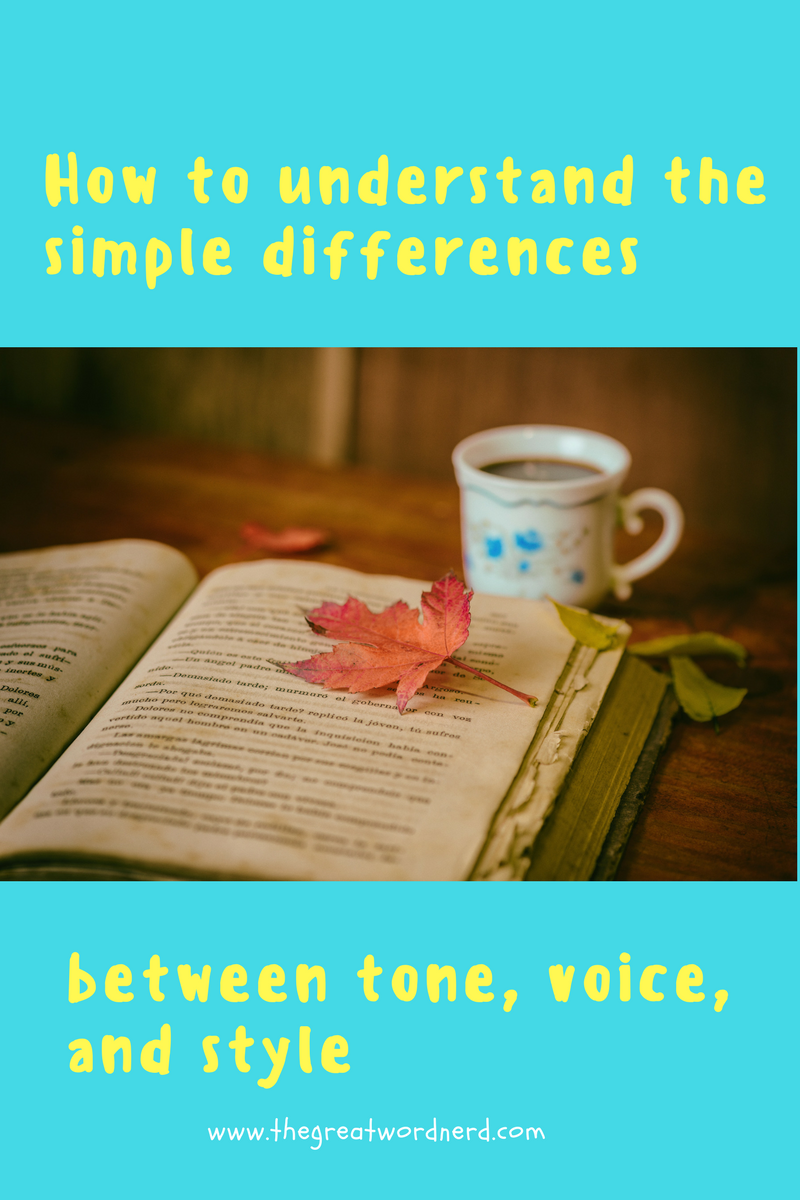Tone, voice, style. Being asked the differences between these can be like answering the riddle “Which came first: the chicken or the egg?”
I can’t tell you how many times I’ve editorial managers and even tenured content creators slipping up over these words. They sputter and cough, saying things like, “We need to adjust the tone-achoo-voice of this article.”
Even big-name content agencies have mistakenly used the terms interchangeably without realizing. One minute, they’re telling writers to alter an article’s tone, the next they’re giving that same writer a pat on the back, thanking them for a job well done on changing up its voice. These poor writers are completely baffled. They’re left cross-eyed and scratching their heads.
So let’s clear the confusion, once and for all. And then as a bonus, we’ll talk about style, too, since it’s another one of those words you often hear tangled up with the others.
So here we go: tone, voice and style.
Tone
Remember when you were younger and did that thing you weren’t supposed to? And your dad found out and tried to stay calm, but you could still hear the fury in his voice?
Or when your mom didn’t give you permission to go out with your friends, and you got mad? And she warned you to watch your tone?
That’s what you should think about when you think of tone. Tone is your emotions, attitudes, and feelings toward a subject, which carry through in your voice.
It’s always what carries through in your writing. When you talk, you convey your tone through the undulations in your voice. But when you write, that tone is conveyed by the words you choose.
Tone is important because it sets the mood for a piece and brings your work to life. And it’s super important because if it’s off or inappropriate for the piece, it could completely throw your reader off and disconnect them from your writing.
A tone can be humorous, serious, sarcastic, cheerful or anything else that conveys an attitude. But say you’re writing a funny story about your life, and your word choice is formal, stiff, and not very humorous. Your audience is going to feel confused about how to react. Should they laugh or not? Are they reading humor or no?
So it’s important you not only understand what tone is, but also use an appropriate one.
Up next, voice.
Voice
Ever notice how you and your best friend or spouse can say the same thing in a totally different way?
For example, you might say, “I’ve got me a hankering for some steak tonight.” And your best friend might say, “I could appreciate steak for supper.”
Notice how you have a casual, zesty way? And your friend is more proper or formal?
Voice is a reflection of a writer’s personality, style, and point of view on a topic. It’s depicted by your language use and word choice.
It’s easy to see that you’re the more spirited one. In writing, voice conveys your personality.
How you write influences how your reader perceives you: long-winded, arrogant, conversational, friendly, sensitive, etc. Voice is what allows readers who are familiar with you to read a few sentences and recognize your writing.
So remember, tone is your mood or how you feel about something. Voice is your personality. Your voice won’t ever change–it’s a part of you. It’s innate. It’s who you are. But your tone can change depending on your mood or sentiment toward a topic.
In ghostwriting, learning to emulate voice is incredibly important since you’re being paid to write in someone else’s. But more on that in an upcoming blog post.
Now on to style.
Style
Compared to tone and voice, style encompasses something much broader. For example, it’s your sentence length (long or short?), way of conveying points (use of simile, metaphors, or imagery?), and sentence structure (elaborate or simple?).
“I ran. I leapt. I hid. He was right behind me, but I couldn’t let him catch me. I had to give it my all…or die trying.”
The above sentence style is simple–no complex words–has short sentences, and uses a decent rhythm.
“Scampering past the oak tree, its finger-like branches tearing at my face angrily, I struggled to outpace him. To fall prey to his clutches was to invite death.”
This style is more elaborate, has longer sentences, is more wordy, has larger words, and is more complex than the previous. You can see here how the sentences convey the same messages, share a similar tone, but have varying styles.
Now that we’ve covered what tone, voice, and style each mean, hopefully you can use them with confidence as you discuss your writing and mind them better when it comes down to actually putting pen to paper (or finger to keyboard!).
Happy writing!
-Salina


